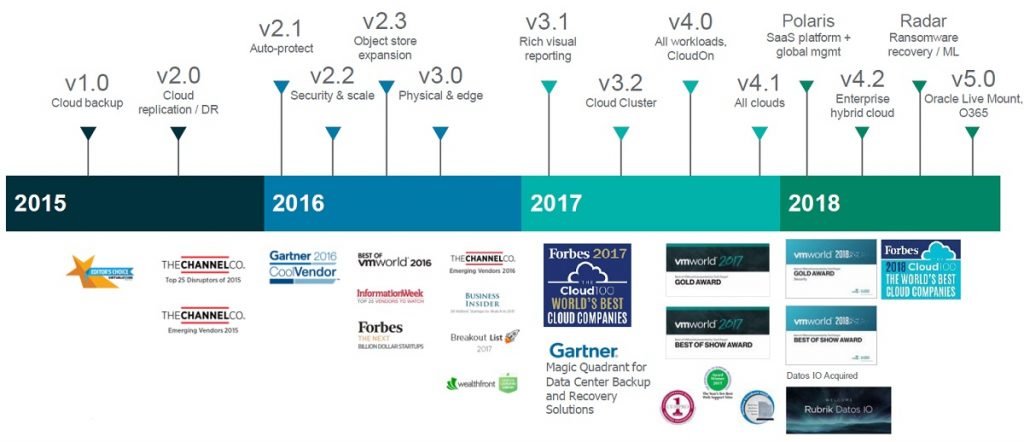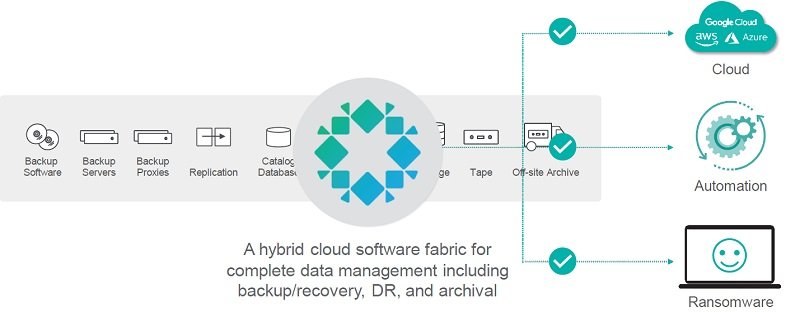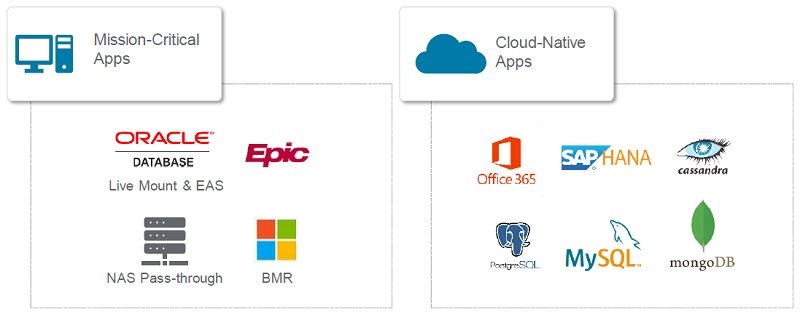Rubrik has just announced the new Rubrik Andes 5.0 to deliver automated backup, recovery, archival, search, cloud, and development in a simple, scale-out platform built for the hybrid cloud.
Rubrik Andes is the company’s 14th and most significant release to date of its Cloud Data Management (CDM) platform, that supports for the key modern operating environments in the enterprise, including: VMware, Hyper-V, AHV; physical environments such as Linux and Windows; and AWS, Azure and private clouds.
Considering the history or the product, in only three years it has grown from the v1.0 (I’ve started writing about it since v2.0) to the latest Rubrik Alta 4.2 and Rubrik Polaris Radar. And now to the v5.0… very impressive!
The idea of Rubrik’s CDM platform is to build a software-defined platform that unifies backup, instant recovery, replication, search, analytics, archival, compliance, and copy data management in one secure fabric across the data center and cloud. A kind of hybrid cloud software fabric for the complete (secondary) data management that can enable the digital transformation.
A complete platform to deliver data protection, search and analytics, archiving and compliance, and copy data management capabilities for hybrid cloud enterprises.
The new v5.0 version adds:
- Instant recovery for Oracle databases (Oracle was first supported in v4.0)
- SAP HANA support and SAP Certified Solution
- NoSQL database support (via Rubrik Datos IO)
- SQL Server enhancements with a Change Block Tracking (CBR) filter driver and support to VSS (SQL Server was first supported in v3.0)
- Policy-driven protection for Epic EHR
- Windows Server Bare Metal Recover (BMR)
- Microsoft Office 365 support (via Polaris SaaS Platform)
- VMware vSphere recovery enhancements, like live mount VMDKs from a snapshot
- SLA policies enhancements
- Snapshot retention enhancements
- Security enhancements, like the new multi-factor authentication using RSA SecurID
- NAS Direct Archive
- Elastic App Service (EAS)
The new version adds support for some new business and mission-critical applications, like Oracle and SAP HANA, but it also tries to cover several cloud-native applications to better protect traditional and new businesses.














